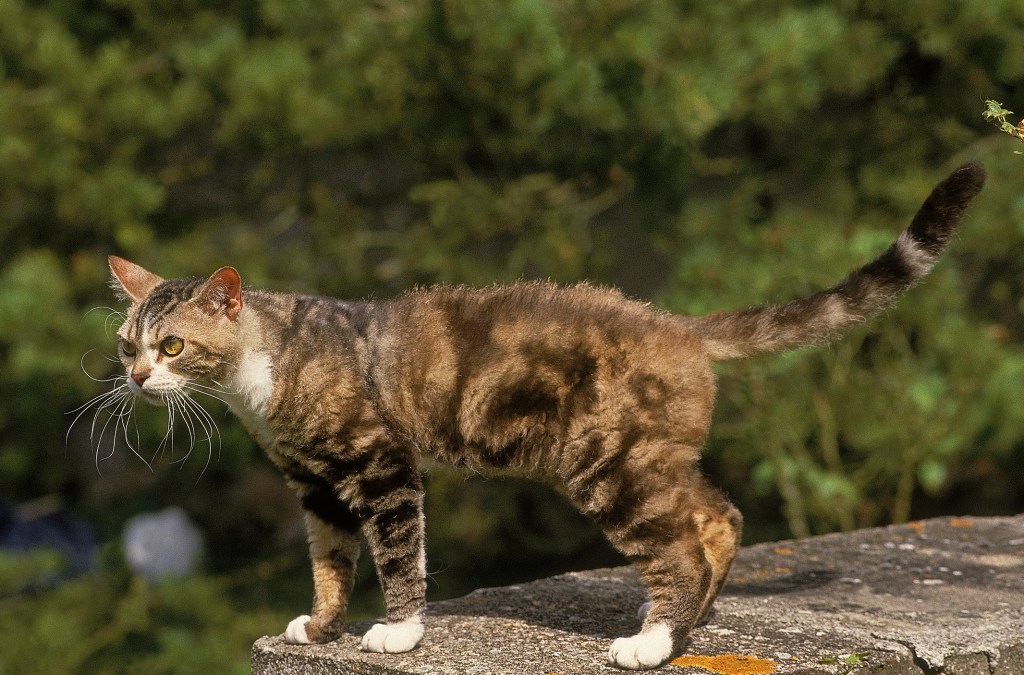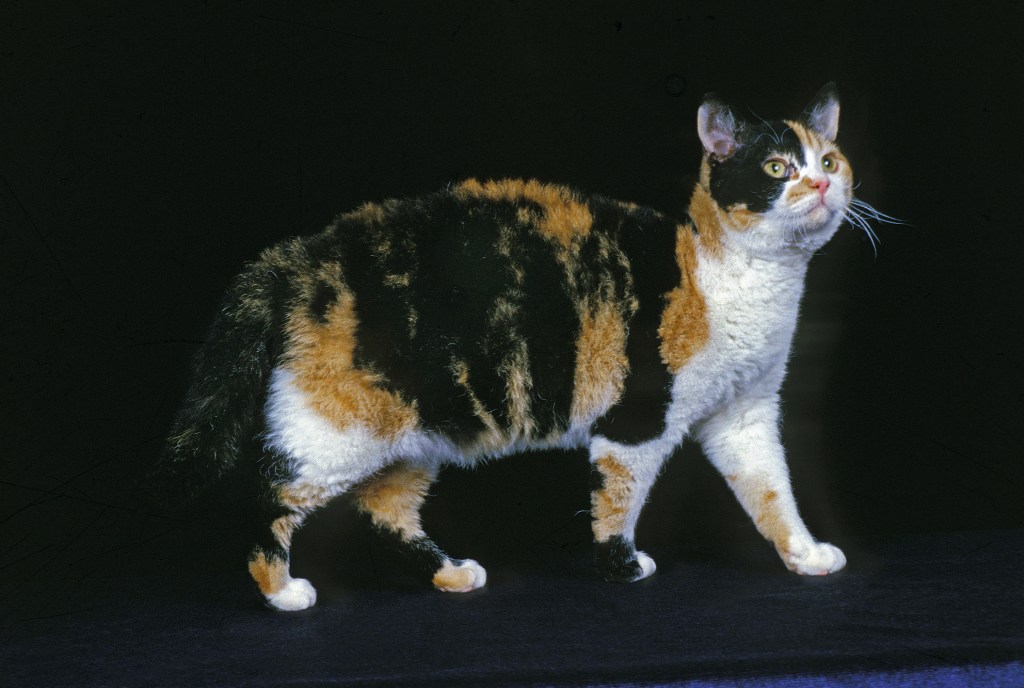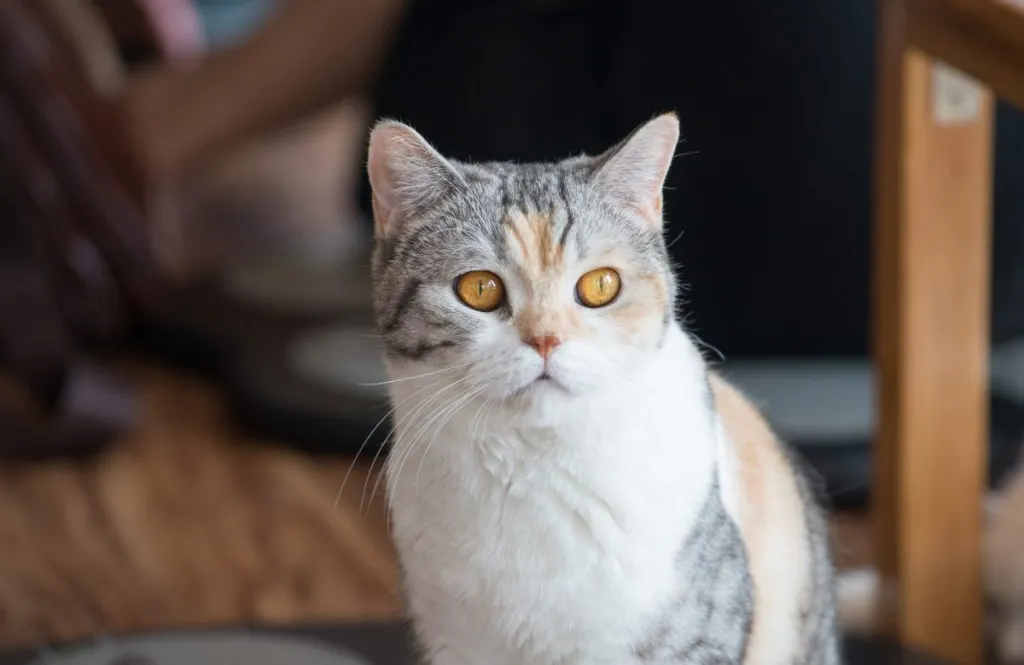The American Wirehair cat, with its distinctive and charming appearance, is a unique and relatively rare breed that captures the hearts of cat enthusiasts worldwide. Known for its unusual wiry coat and friendly demeanor, this feline breed has become a beloved companion to those seeking a one-of-a-kind pet.
Originating in the United States, the American Wirehair has a fascinating history that adds to its allure. The unique texture of their fur is a result of a genetic mutation that affects the hair shafts, causing them to be crimped or curled. This gives the coat a dense and coarse feel, adding to the cat’s individuality.
When considering an American Wirehair cat, it’s advisable to prioritize adopting from rescue organizations or shelters to provide a loving home to a cat in need. However, if you decide to purchase, it’s crucial to choose a reputable breeder. Conduct thorough research to ensure that the breeder follows ethical practices and prioritizes the well-being of their cats. Reputable American Wirehair cat breeders prioritize the health and temperament of their cats, conduct necessary health screenings, and provide a nurturing environment for the kitties. This active approach ensures that you bring home a healthy and happy kitty while discouraging unethical breeding practices.
Quick Facts
- Origin: United States, 1966, from spontaneous mutation in a domestic shorthair kitten.
- Size: Medium (8-12 pounds)
- Breed Group: Natural Breed
- Lifespan: 7-12 years
- Coat: Short, dense, wiry texture due to a unique gene, comes in various colors and patterns like solid, tabby, bi-color, and tortoiseshell.
- Temperament: Easygoing, laid-back, playful, affectionate, social, adaptable, good with children and other pets.
- Exercise Needs: Moderate – enjoys playtime but also content lounging.
- Training: Relatively easy to train due to their intelligence and desire to please.
- Grooming: Weekly brushing recommended to prevent matting, especially around the ears.
- Health: Generally healthy but some potential for genetic health conditions like hypertrophic cardiomyopathy (HCM).
- The low numbers registered by the CFA consistently make this one of the rarest cat breeds in the world.
- Even though the Devon Rex and Cornish Rex also have curly hair, the American Wirehair cat is not genetically similar to either.
- The gene for wiry hair is an incomplete dominant gene, meaning it doesn’t always cover recessive traits. As a result, some litters might have straight hair kittens.
American Wirehair Pictures


-
Affectionate with Family
Some cat breeds are typically independent and aloof, even if they’ve been raised by the same person since kittenhood; others bond closely to one person and are indifferent to everyone else; and some shower the whole family with affection. Breed isn’t the only factor that goes into affection levels; cats who were raised inside a home with people around feel more comfortable with humans and bond more easily.

See Cats Less Affectionate with Family -
Amount of Shedding
If you’re going to share your home with a cat, you’ll need to deal with some level of cat hair on your clothes and in your house. However, shedding does vary among the breeds. If you’re a neatnik, you’ll need to either pick a low-shedding breed or relax your standards. This furniture cover can make it easier to clean up cat hair and keep it off your sofa!
-
General Health
Due to poor breeding practices, some breeds are prone to certain genetic health problems. This doesn’t mean that every cat of that breed will develop those diseases; it just means that they’re at an increased risk. If you’re looking only for purebred cats or kittens, it’s a good idea to find out which genetic illnesses are common to the breed you’re interested in.
-
Potential for Playfulness
Some cats are perpetual kittens—full of energy and mischief—while others are more serious and sedate. Although a playful kitten sounds endearing, consider how many games of chase the mouse-toy you want to play each day, and whether you have kids or other animals who can stand in as playmates. A classic wand cat toy like this one is perfect for playful felines!
-
Kid-Friendly
Being tolerant of children, sturdy enough to handle the heavy-handed pets and hugs they can dish out, and having a nonchalant attitude toward running, screaming youngsters are all traits that make a kid-friendly cat. Our ratings are generalizations, and they’re not a guarantee of how any breed or individual cat will behave; cats from any breed can be good with children based on their past experiences and personality.
-
Friendly Toward Strangers
Stranger-friendly cats will greet guests with a curious glance or a playful approach; others are shy or indifferent, perhaps even hiding under furniture or skedaddling to another room. However, no matter what the breed, a cat who was exposed to lots of different types, ages, sizes, and shapes of people as a kitten will respond better to strangers as an adult.
-
Easy to Groom
Some breeds require very little in the way of grooming; others require regular brushing to stay clean and healthy. Consider whether you have the time and patience for a cat who needs daily brushing. You should definitely pick up this awesome de-shedding tool for cats of any hair length!
-
Intelligence
Some cat breeds are reputed to be smarter than others. But all cats, if deprived the mental stimulation they need, will make their own busy work. Interactive cat toys are a good way to give a cat a brain workout and keep them out of mischief. This scratcher cat toy can keep your smart kitty busy even when you’re not home!
-
Pet Friendly
Friendliness toward other household animals and friendliness toward humans are two completely different things. Some cats are more likely than others to be accepting of other pets in the home.
American Wirehair History
This cat is an American original. It’s not unusual for natural mutations to pop up in cats in different places around the world, but so far the mutation for a wiry coat has appeared only in the United States. It was first seen in 1966, in a litter of kittens born to a domestic shorthair cat in upstate New York. The only kitten to survive from that litter was a red tabby and white male.
Because of his unusual coat, the owners showed him to a local cat breeder, Joan O’Shea, who purchased the kinky-coated kitten for $50, named him Council Rock Adam of Hi-Fi and set about trying to reproduce him through crosses to American Shorthairs.
The American Wirehair achieved full recognition from the Cat Fanciers Association in 1978. In The International Cat Association, the breed is considered a type of American Shorthair. American Wirehairs are also recognized by the American Cat Fanciers Association, the Canadian Cat Association, and the World Cat Federation. They are outcrossed to American Shorthairs to maintain genetic diversity.
American Wirehair Size
The American Wirehair cat is generally a medium-sized breed with a well-proportioned and muscular build. Adult males typically weigh between 8 to 15 pounds, while females usually range from 6 to 12 pounds.
American Wirehair Personality
An American Wirehair can be expected to have much the same personality as the American Shorthair: adaptable, good-natured, affectionate and playful. He is sometimes described as clownish. This is an athletic cat with a moderate activity level. He enjoys a good playtime as much as the next cat, but he’s not overly demanding of attention or activity.
As befits a working class cat who has made good, he is smart and enjoys playing with puzzle toys and interactive toys. He has a sociable nature and isn’t the type to hide under the bed when visitors arrive. The American Wirehair is a quiet cat who loves people and will follow them from room to room. He takes a keen interest in everything going on around him. He may or may not be a lap cat, but he will always appreciate having a spot next to you on the sofa or at the end of the bed.
American Wirehair Health
Both pedigreed cats and mixed-breed cats have varying incidences of health problems that may be genetic in nature. American Wirehairs are generally healthy, however.
American Wirehair Care
The American Wirehair’s unusual coat needs little care. Brushing or combing can damage it, so that type of grooming isn’t necessary except in the spring, when the cat is shedding his winter coat. A bath is rarely necessary. Brush the teeth to prevent periodontal disease. Daily dental hygiene is best, but weekly brushing is better than nothing.
Trim the nails every couple of weeks. Wipe the corners of the eyes with a soft, damp cloth to remove any discharge. Use a separate area of the cloth for each eye so you don’t run the risk of spreading any infection. Check the ears weekly. If they look dirty, wipe them out with a cotton ball or soft damp cloth moistened with a 50-50 mixture of cider vinegar and warm water. Avoid using cotton swabs, which can damage the interior of the ear.
Keep the litter box spotlessly clean. Cats are very particular about bathroom hygiene. It’s a good idea to keep an American Wirehair as an indoor-only cat to protect him from diseases spread by other cats, attacks by dogs or coyotes, and the other dangers that face cats who go outdoors, such as being hit by a car. American Wirehairs who go outdoors also run the risk of being stolen by someone who would like to have such an unusual cat without paying for it.
American Wirehair Coat Color And Grooming
Sproing! That’s not the typical reaction we expect when we pet a cat, but his springy, resilient coat is part and parcel of the American Wirehair’s charm and good looks. The crimped, tight hair of the medium-length coat has a hard but pleasing texture. Even the whiskers and the hair inside the ears is crimped and springy. The coat comes in many different colors and patterns.
The American Wirehair has a rounded head with high cheekbones, medium-size ears that are rounded at the tips, and large, round bright eyes that tilt slightly upward. The medium-size body is supported by muscular legs and rounded paws with heavy pads. Flicking behind the well-rounded rear end is a tail that tapers from the rump to a rounded tip.
Children And Other Pets
The easygoing but playful American Wirehair is a perfect choice for families with children and cat-friendly dogs. He can learn tricks and loves the attention he receives from children who treat him politely and with respect. He will get along fine with dogs if they don’t give him any trouble.
He is a skilled hunter, but may learn to leave pet birds or other small animals alone if he is introduced to them at an early age. When in doubt, however, separation is best. Always introduce any pets, even other cats, slowly and in a controlled setting.
American Wirehair Rescue Groups
More Info For You
If you’re also looking for a dog, check out DogTime’s dog breed page!





